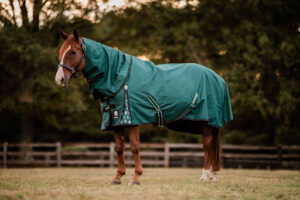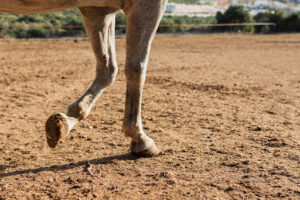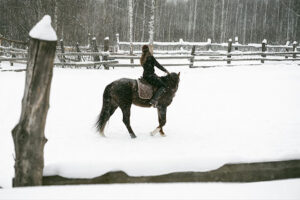The Dressage Scales of Training: Collection (Part 6 of 6)
You’ve reached the final article in our six-part series on the scales of training. Parts one to five covered rhythm, suppleness, connection, impulsion, and straightness. In this sixth installment, we’ll look at the final scale – collection. If you haven’t yet read the first five articles, it’s recommended that you go back and read them in order. This will give […]
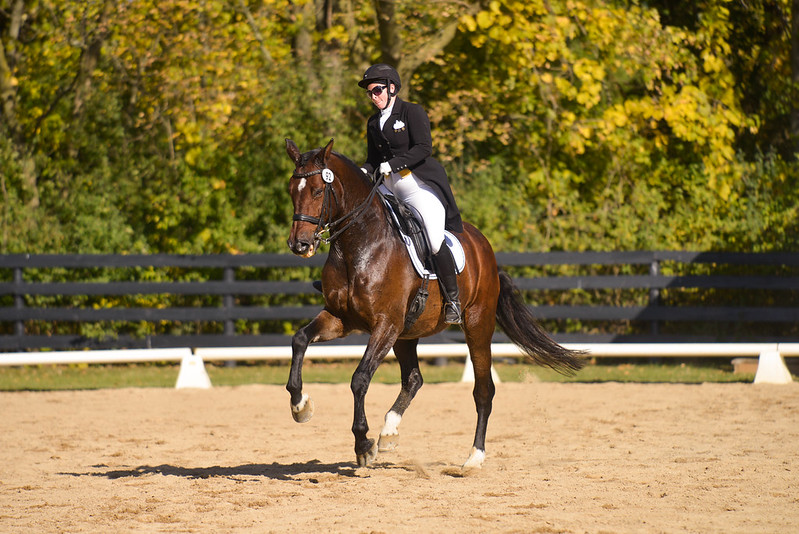
You’ve reached the final article in our six-part series on the scales of training. Parts one to five covered rhythm, suppleness, connection, impulsion, and straightness. In this sixth installment, we’ll look at the final scale – collection.
If you haven’t yet read the first five articles, it’s recommended that you go back and read them in order. This will give you a full understanding of how the scales of training work together and how you eventually reach the pinnacle of horse training—collection—and how you can build a strong foundation for the training of any horse.
But if it’s collection you specifically want to learn more about, you’re in the right place. Before we dive into the details of the how and why of collection, here’s a brief overview of how the scales of training work when producing a horse.
What are the Scales of Training in Dressage?
The scales of training originated in Germany. At that point in history, they weren’t applicable to dressage for sport, but were used as a way to guide the training of horses for the German cavalry.
Because both classical and modern dressage are based on this training – which is why you’ll see movements like the capriole at the Spanish Riding School – the scales of training are still applicable to horses being ridden for fun and competition in modern times.
When you think of the scales of training, which are sometimes called the pyramid of training, you can imagine the first scale as the base and the sixth one as the top of a pyramid.
The six scales are:
- Rhythm
- Suppleness/Relaxation
- Connection/Contact
- Impulsion
- Straightness
- Collection
However, it’s not true that you have to completely and fully establish one scale before moving to the next. Instead, try to envision them as a set of interrelated principles or concepts. As you probably know by now, you’re never “finished” working on something when it comes to horses!
For example, a horse doesn’t “finish” working on connection at any point. If you considered connection or rhythm to be finished once your horse had basic schooling, for instance, then the level of connection and rhythm that your young training level horse showed would be the same that they showed at fourth level. Or at Grand Prix. And of course, that isn’t how training works! So, each scale is always being revisited during the training process even as you progress up the levels.
There’s another way that the scales tend to be interrelated too. They are intrinsically linked in the sense that when you work on and improve one, you automatically tend to see an improvement in one or more of the other scales. For example, improving collection has a domino effect and will help you improve connection too. And the opposite also applies. That is, improving the connection and contact will help your horse to develop his ability to collect.
So if they aren’t really a pyramid at all, and the scales are all just concepts which relate to each other, why does it matter what order they’re in? The scales of training, although not completely linear, do describe the general progression of a horse’s schooling. The first three scales are usually the beginning stages of a horse’s training, and getting them established is usually considered “basic schooling” for a horse. They also lay the foundation for the top three scales.
That means until your horse has at least a decent understanding of rhythm, suppleness, and connection, it’s very difficult to add impulsion and collection. Straightness is more complicated, as we do teach horses to travel straight from fairly early on. However, true straightness is much harder to achieve.
But once your horse has basic schooling, and is ready to work on the higher scales, the need to continue improving on the first three scales doesn’t disappear. Instead, it becomes a continual process of improving and refining each scale. A horse working at first level would still revisit and improve connection, and so would a Grand Prix horse – but the way you’d go about schooling to improve each of these elements would differ.
Now that the concept of the scales of training is understood, it’s time to look at collection. It’s probably a term you’ve heard often in the horse world, but how exactly does it impact a horse’s schooling?
What is Collection?
A horse demonstrating collection is the ultimate goal of dressage. But collection is a sliding scale – a horse who can demonstrate a difference between a collected and working canter can’t necessarily collect enough to do a canter pirouette or a piaffe (for an explanation of the various dressage movements, read our guide here!)
So what exactly defines collection? According to the FEI, collection is a “more intensive bending of the hind legs [that] leads to the center of gravity being shifted further backwards. This results in the increased lightness of the forehand. The steps and strides become shorter, but activity/impulsion is sustained and makes the horse’s movement appear more cadenced.”
In short, collection is when a horse (under saddle) lowers and engages the hindquarters, and lightens the shoulders. This allows the horses to carry more weight on the hind quarters than on the front end. This is what makes a horse look “uphill” even when they are on level ground, what keeps them balanced in advanced movements, and what helps to develop cadence and expression.
Collection can refer to the ability a horse has to demonstrate or perform, for instance, a piaffe. If your horse doesn’t have the ability to collect enough to perform tempi changes or piaffe, the overall way of going needs to be improved. Or it can refer to specific gaits – such as the collected trot or canter. If a horse is being ridden in a collected gait, they will show a shorter stride and frame with increased energy and activity from the hind legs.
If your horse isn’t collected enough for the level of work for which you’re asking, it will show in the way of going. The horse might become resistant, hollow, rushed, or on the forehand. If you ride a small circle, for instance, and your horse changes rhythm or struggles to maintain their activity, they likely don’t have the collection required for that movement or level of performance. If your horse is comfortably and fluidly performing the movements required, they are probably showing sufficient collection for their level of schooling.
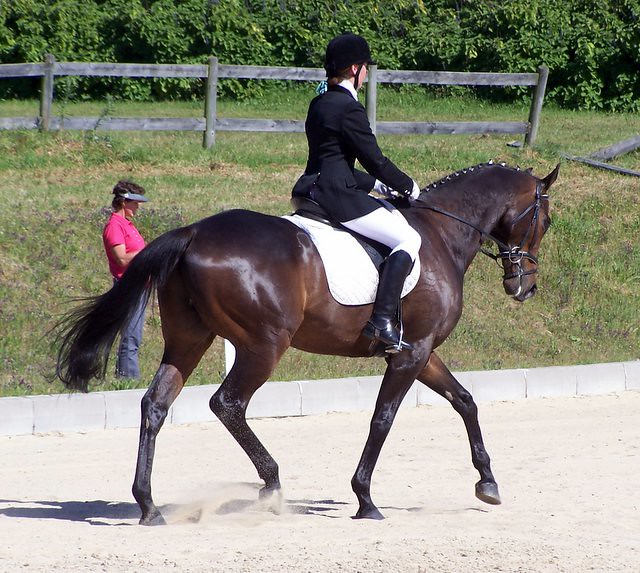
How Do You Collect a Horse?
Because horses in true collection take short steps, many riders try to collect by pulling back and making the horse slow. Of course, this isn’t the way to achieve true collection. True collection happens because the horse has taken more weight behind and can take taller, more active steps. In the process, they shorten the frame by stepping further underneath their body. So, improving collection has to involve improving your horse’s ability to step underneath their body with the hind leg while adding activity. This is achieved by progressively strengthening the horse, riding with added energy and making use of well-timed half halts to help them develop their natural ability. The idea is to ask your horse to step forward with more activity without lengthening their frame, and to build upon this over time. No single exercise can make your horse collect – it is a gradual process.
Of course, the exercises and tools you’ll use to develop collection will depend upon the degree of collection needed. Even in very novice horses, collection can be seen during the transitions.
So transitions are always a valuable tool when it comes to developing collection. As your horse becomes more collected, these transitions might be between a very collected trot and an extended trot, for instance, whereas in a green horse the transition might be between walk and trot.
Additionally, most lateral work is valuable in developing the ability to collect. This is because it improves the horse’s ability to engage the hind legs and step further underneath themselves. Lateral work also aids in improving suppleness, which is crucial to collection. Shoulder in is one of the best exercises, and can be ridden in all gaits and started when horses are still fairly novice (as a shoulder fore, initially). Renvers, travers, and half-pass all help to develop your horse’s ability to take more weight behind too!
Finally, counter canter is very helpful for developing a horse’s ability to collect. You can start by riding only short bursts of counter canter and work up to adding in circles, corners, and more. This helps your horse to activate the hind leg and develop more straightness, allowing them to step underneath their body even further.
Conclusion
True collection is the pinnacle of dressage. Whether or not a horse has the ability to successfully perform the highly collected movements at Grand Prix level (piaffe, passage, and pirouette) is largely what separates great horses from good horses. But even at lower levels, horses can start to develop and demonstrate collection.
However, it’s crucial that collection comes from a change in balance and added activity rather than artificially shortening the stride by pulling on the reins. This comes from a progressive strengthening and suppling of the horse, and takes years to achieve.
What are your favorite exercises to improve collection? Let us know by leaving a comment.





